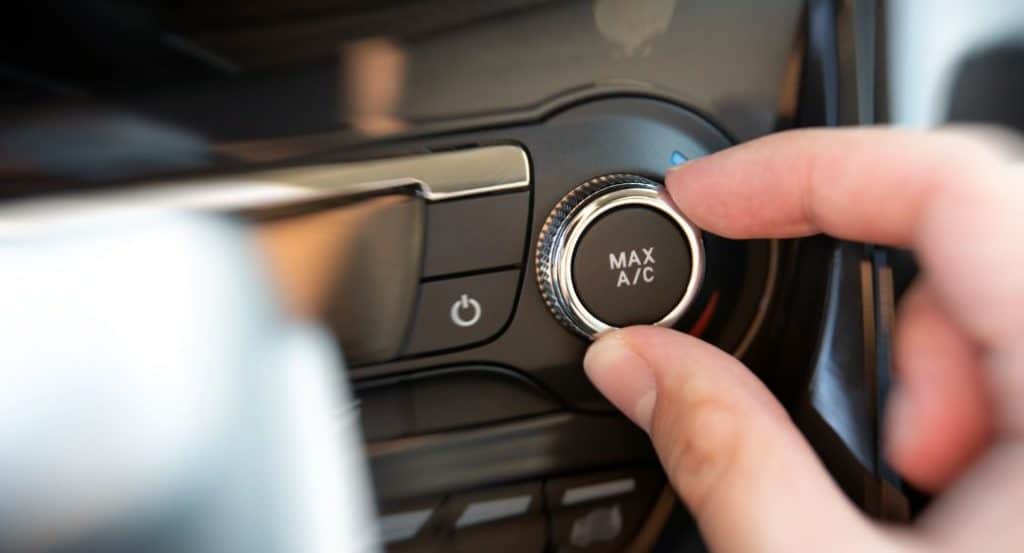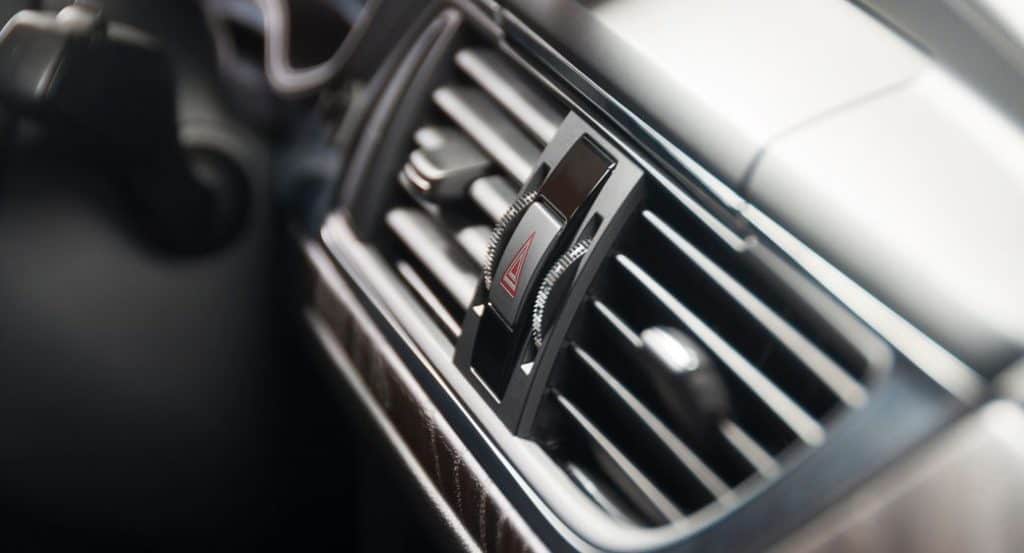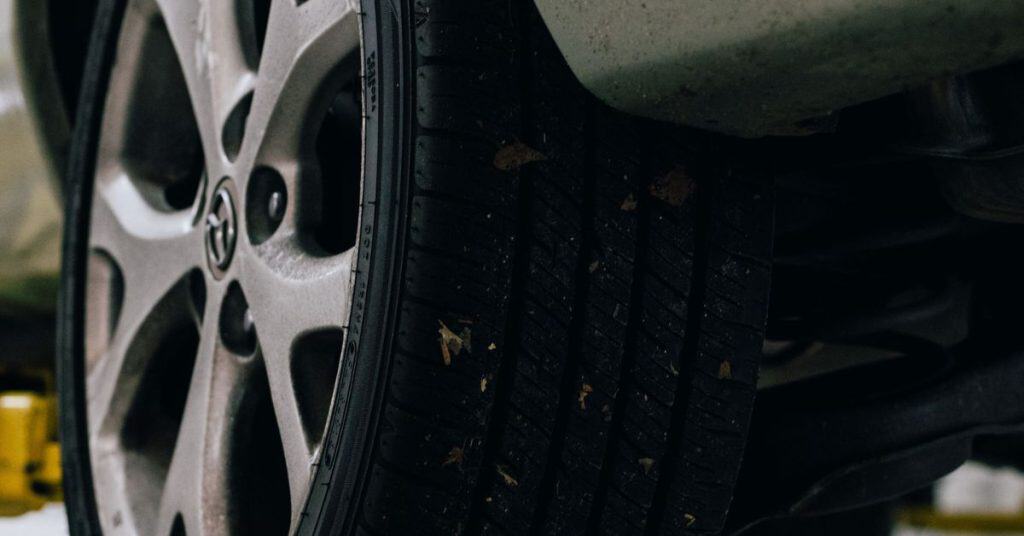Automotive air conditioning systems are essential for providing comfort during hot weather. Understanding how these systems work can help car owners maintain them better and identify potential issues early. This comprehensive guide breaks down the various components and processes involved in automotive air conditioning, offering a clear view of how they work together to cool your vehicle.
The Basics of Air Conditioning
At its core, an automotive air conditioning system works by manipulating refrigerant through various components to absorb heat from the interior of the car and release it outside. The cycle of compression, condensation, expansion, and evaporation of the refrigerant allows for efficient heat exchange, resulting in a cool and comfortable environment inside the vehicle.
The Role of the Compressor
The compressor is often referred to as the heart of the air conditioning system. It compresses the refrigerant, raising its pressure and temperature before sending it to the condenser. The compressor is powered by a belt connected to the engine, and it starts the cooling process by circulating the refrigerant throughout the system. Without a functioning compressor, the air conditioning system cannot operate effectively.
The Importance of the Expansion Valve
The expansion valve, or orifice tube, regulates the flow of refrigerant into the evaporator. It reduces the pressure of the high-pressure liquid refrigerant from the condenser, causing it to expand and cool rapidly. This rapid cooling is essential for the refrigerant to absorb heat effectively in the evaporator, making the expansion valve a critical component in the cooling cycle.

The Evaporator’s Job
The evaporator is located inside the car’s cabin, usually behind the dashboard. When the low-pressure, cooled refrigerant enters the evaporator, it absorbs heat from the car’s interior. A fan blows air over the cold evaporator coils, cooling the air before it circulates back into the cabin. The refrigerant, now warmed by the absorbed heat, evaporates back into a gas, completing the cycle back to the compressor.
The Refrigerant Cycle
Refrigerant is the working fluid in the air conditioning system, cycling through the compressor, condenser, expansion valve, and evaporator. Modern systems typically use R-134a refrigerant, though newer models are moving towards more environmentally friendly options like R-1234yf. The refrigerant’s ability to change states from liquid to gas and back again is what makes air conditioning possible.
The Role of Refrigerant Oil
Refrigerant oil is mixed with the refrigerant to lubricate the moving parts of the compressor and other components. This oil helps reduce friction and wear, ensuring the longevity of the air conditioning system. Regular maintenance should include checking the refrigerant oil levels to prevent damage to the compressor and maintain efficient operation.
Signs of a Faulty Air Conditioning System
Recognizing the signs of a faulty air conditioning system can help prevent more significant issues. Common symptoms include weak airflow, unusual noises, unpleasant odors, and fluctuating temperatures. If you notice any of these signs, have your system inspected and repaired promptly to avoid further damage and maintain comfort.
Maintaining Your Air Conditioning System
Regular maintenance is key to ensuring your air conditioning system operates efficiently. This includes checking refrigerant levels, inspecting hoses and connections for leaks, and ensuring the compressor and other components are functioning correctly. A well-maintained system not only provides better cooling but also extends the life of the components, saving you money in the long run.
Common Issues and Troubleshooting
Common issues with automotive air conditioning systems include refrigerant leaks, compressor failure, and electrical problems. Troubleshooting these issues often involves checking for visible signs of wear or damage, listening for unusual noises, and using diagnostic tools to measure pressure and temperature levels. Addressing these problems early can prevent more extensive and costly repairs.

The Impact of Environmental Factors
Environmental factors can significantly influence the performance and longevity of your vehicle’s air conditioning system. High ambient temperatures force the system to work harder to achieve the desired cooling effect, which can lead to increased wear and tear. Additionally, high humidity levels can cause the evaporator to work overtime to remove moisture from the air, potentially leading to ice formation on the coils if the system is not functioning correctly.
Dust and debris can clog the condenser, reducing its ability to dissipate heat efficiently. Regular cleaning of the condenser and ensuring unobstructed airflow can help mitigate these effects and maintain optimal system performance.
Upgrading Your Air Conditioning System
Upgrading your vehicle’s air conditioning system can offer substantial benefits, particularly for older vehicles with outdated components. Switching to a more modern refrigerant, such as R-1234yf, can improve efficiency and reduce environmental impact. Installing a high-efficiency compressor can enhance cooling performance and reduce energy consumption.
Upgrading the evaporator and condenser units to newer models can also improve heat exchange efficiency. These upgrades not only enhance the cooling capacity of your system but also extend its lifespan and reduce the likelihood of breakdowns, providing a more reliable and comfortable driving experience.
Professional Servicing and Repairs
While regular DIY maintenance can help keep your air conditioning system in good shape, professional servicing is essential for addressing more complex issues. A qualified technician can perform detailed diagnostics to identify underlying problems that might not be visible to the untrained eye.
They can check for refrigerant leaks, assess the condition of the compressor and other components, and ensure that the system is operating within the manufacturer’s specifications. Regular professional servicing can prevent costly breakdowns, improve system efficiency, and extend the overall lifespan of your air conditioning system, ensuring it provides reliable performance when you need it most.
Now that you know how automotive air conditioning works, you can better appreciate the importance of each component and the need for regular maintenance. For more complex issues, visiting a car repair shop is essential to get professional assistance and keep your vehicle’s air conditioning system in top condition. This knowledge empowers you to maintain a cool and comfortable ride, no matter the weather outside.
Shocks and struts are integral components of your vehicle’s suspension system, crucial for ensuring a smooth ride and safe handling. Over time, these parts wear out and need replacement to maintain vehicle performance and safety. Read on to explore how to know it’s time to replace your car’s shocks and struts.
Understanding Shocks and Struts
Shocks and struts are not interchangeable terms—they refer to different parts that serve similar functions within a vehicle. Shocks, or shock absorbers, help control the impact and rebound movement of your vehicle’s springs and suspension. Struts, on the other hand, are a structural component of the suspension system that also affect ride comfort and vehicle handling. Both play crucial roles in stabilizing your car’s movements and enhancing control when you are driving.
Excessive Bouncing
One of the most noticeable signs that your car’s shocks or struts may need replacing is excessive bouncing. Drive over a bump or a small pothole; if your vehicle continues to bounce or rock back and forth several times, it is a clear indication that your suspension system isn’t performing effectively. This is due to the shocks and struts failing to keep the vehicle steady against the coil springs.
Dipping and Swerving When Braking
Pay attention to how your car behaves when you brake. If you notice that the front end of your car dips dramatically or the rear squats during braking, it could indicate worn-out shocks or struts. This condition not only affects the comfort of your ride but also extends the braking distance, which can compromise your safety.
Uneven Tire Wear
Inspect your vehicle’s tires regularly for uneven wear patterns. Cupping or scalloping of tires often indicates that the shocks and struts are not holding the vehicle steady against the road. Uneven tire wear can result in poor handling and traction, leading to increased risk while driving.
Leaking Fluid
If fluid is leaking down the side of your car’s shocks or struts, they may be broken or losing their effectiveness. The fluid in the shocks and struts helps dampen the impact from road surfaces, and a leak can result in reduced performance and increased wear and tear on other components of the suspension system.

Poor Steering Response
Worn shocks and struts can also affect your car’s steering responsiveness. If steering feels stiff or your vehicle sways or leans on turns or when changing lanes, it could be a sign that the shocks or struts are failing. This can affect your ability to control your vehicle, especially at higher speeds.
Increased Road Noise
Another indicator of worn shocks and struts is an increase in road noise and vibration coming through the vehicle. As these parts degrade, they become less effective in absorbing the bumps and vibrations from the road, resulting in a rougher and noisier ride.
Mileage Indicator
Most manufacturers recommend replacing the shocks and struts after approximately 50,000 miles, but this can vary depending on vehicle type and driving conditions. Check your vehicle’s owner manual for specific recommendations. Regular checks by a professional can help assess whether your vehicle’s suspension needs attention sooner.
Vehicle Instability at High Speeds
If your vehicle feels unstable or “floats” at high speeds, or if you feel excessive vibration through the steering wheel, it’s likely time to check your suspension system. This instability can be dangerous, particularly in windy conditions or on uneven road surfaces.
Difficulty Handling When Loaded
If your vehicle struggles to stabilize after being loaded or it feels unusually bumpy while carrying a heavier load, it might be a sign that the shocks and struts are worn out. Effective shocks and struts should be able to handle heavier loads without compromising the vehicle’s stability.
Visual Inspection
Sometimes, the physical condition of the shocks and struts can indicate wear. Look for signs of rust or damage to the shock or strut housing. Any visible damage or unusual conditions could suggest it’s time for replacements.
Stability Testing
The bounce test is a quick and straightforward way to check the condition of your car’s shocks and struts. Simply push down with force on the front end of your parked vehicle and then let go. Observe how the vehicle reacts. If it rebounds more than once or twice, this is a strong indication that the shocks or struts are worn out and unable to effectively dampen the movement. Repeat this test at the rear of the vehicle to ensure all components are functioning correctly. This simple diagnostic can be performed at home, helping you decide whether a professional assessment is needed.

Regular Maintenance Checks
Regular maintenance checks are crucial for the early detection of potential issues with your vehicle’s shocks and struts. Incorporate these checks into your vehicle’s routine service schedule. During an oil change or tire rotation, ask your mechanic to inspect your car’s suspension system for any signs of wear or failure. This regular scrutiny helps keep your vehicle running smoothly and may prevent expensive repairs caused by worn suspension components leading to other mechanical failures.
Professional Assessments
If you suspect that your car’s shocks or struts may need to be replaced, it’s wise to consult a professional mechanic. They can perform a more detailed inspection using specialized tools and their expertise to accurately diagnose issues. A professional can also differentiate between normal wear and tear and a defective part that requires immediate attention. Relying on professional advice ensures that the necessary repairs are made correctly, which can extend the life of your vehicle and improve safety.
Suspension Service
For professional and reliable service, contact a specialist who can offer comprehensive suspension service. These professionals can provide detailed assessments and high-quality parts replacements to ensure your vehicle runs safely and smoothly.
Now that you know how to recognize when it’s time to replace your car shocks and struts, you can take proactive steps to ensure your vehicle remains safe and comfortable to drive. Performing regular inspections and promptly addressing any signs of wear can prevent more significant issues from developing down the road.
Stop-and-go driving, common in urban environments and during heavy commutes, can significantly impact a vehicle's longevity and performance. Read on to learn how stop-and-go driving is hard on your car and how you can minimize the damage.
Increased Brake Wear
One of the most immediate impacts of stop-and-go driving is on your car’s braking system. Each time you stop, your brake pads and rotors are pressed together to halt the vehicle, causing friction. This friction gradually wears down the brake material. In heavy traffic, where braking is frequent, this wear accelerates, leading to the need for more frequent replacements and increased visits to the brake repair shop.
Engine Stress
Stop-and-go traffic forces your engine to work harder. In constant traffic, the engine never fully reaches optimal operating temperatures and spends a lot of time idling, which isn’t efficient. This can lead to incomplete fuel combustion, residue buildup inside the engine, and increased wear on engine components. The repeated process of accelerating and decelerating also means more stress on the engine’s moving parts.
Transmission Wear
Automatic transmissions are particularly susceptible to wear in stop-and-go traffic. Constant shifting between gears without adequate fluid flow can lead to overheating and increased wear on transmission components. For manual transmissions, frequent clutch engagement and disengagement in traffic can lead to quicker clutch wear and a shortened lifespan.
Fuel Consumption
Stop-and-go driving can lead to higher fuel consumption. Rapid acceleration and frequent idling in traffic require more fuel than steady, moderate-speed driving. The constant acceleration and deceleration make it difficult for your car to use fuel efficiently, leading to poorer mileage and increased fuel costs over time.
Battery Drain
Frequent stopping and starting can drain your car’s battery more quickly. Each start requires a significant amount of energy from the battery, and if the alternator doesn’t have sufficient time to recharge it because of frequent stops, the battery can drain faster than usual. This can be exacerbated in traffic jams where additional systems like air conditioning and entertainment systems may be running simultaneously without the engine operating at a speed that efficiently charges the battery.
Impact on Exhaust System
The exhaust system can also suffer from frequent stop-and-go driving. Operating in traffic can lead to moisture accumulation in the exhaust system, as the system doesn’t get hot enough to evaporate all the moisture that accumulates from the engine and the environment. Over time, this can lead to corrosion and rust, shortening the lifespan of the exhaust components.
Deterioration of Motor Oil
Motor oil degrades faster in stop-and-go conditions. The oil’s ability to lubricate and protect the engine diminishes when it is subjected to high operating temperatures frequently experienced during harsh driving conditions like traffic jams. This can lead to increased engine wear and the need for more frequent oil changes.
Tire Wear
The impact on tires during stop-and-go driving is often overlooked. Frequent accelerating and braking can lead to uneven tire wear, particularly if the vehicle’s alignment is off. This can cause tires to wear prematurely and require replacement sooner than would typically be necessary.
Cooling System Challenges
The cooling system works hardest when the car is moving, as airflow helps keep the coolant temperature regulated. If the cooling system isn’t working efficiently, reduced airflow in traffic can cause the engine to overheat, placing significant strain on the radiator and associated components.
Suspension System Strain
Repeated braking and acceleration can strain the suspension system, including shocks and struts. Over time, this can lead to wear and a less comfortable ride due to the suspension system's diminished ability to absorb road irregularities.
Increased Emissions
Stop-and-go driving can lead to higher emissions. Inefficient combustion and frequent idling increase the amount of exhaust your vehicle releases into the environment. This not only contributes to air pollution but can also lead to failures during emissions testing, depending on your region’s regulations.
Stress on Electrical Systems
Modern vehicles are equipped with numerous electronic systems that rely on consistent electrical power. Frequent stops and starts can lead to voltage fluctuations that strain these systems, potentially causing electrical failures and the need for costly repairs.

Degradation of Catalytic Converter
The catalytic converter, which helps reduce toxic gases from your exhaust, requires high temperatures to function correctly. In stop-and-go traffic, the converter may not reach these temperatures, decreasing its efficiency and potentially leading to increased pollutant emissions and damage to the converter over time.
Overall Wear and Tear
Frequent stop-and-go driving accelerates wear and tear on virtually every component of your vehicle. This includes not just the brakes and engine but also smaller, often overlooked parts such as the clutch in manual vehicles, belts, hoses, and even the vehicle's body, which is affected by the vibration. The cumulative effect of this increased wear can significantly shorten the life expectancy of your vehicle and lead to increased maintenance costs. Being proactive about vehicle maintenance and addressing small issues as they arise can help mitigate these effects and maintain your vehicle’s condition over time.
Proactive Measures and Maintenance
Proactive maintenance is essential to combat the negative effects of stop-and-go driving. This includes regular servicing of your vehicle’s major systems, such as the braking system, transmission, and engine. Additionally, paying close attention to the vehicle's fluid levels (engine oil, transmission fluid, coolant) and condition is crucial, as these fluids play a vital role in keeping mechanical parts lubricated and cool. Scheduling periodic checkups at a certified repair shop can also help identify and rectify issues before they escalate into costly repairs.

Visiting a Brake Repair Shop
One of the most immediate concerns with frequent stop-and-go driving is the increased wear on your vehicle’s braking system. Regular visits to a brake repair shop can ensure that your brake pads, rotors, and other components are in good working condition. These specialists can diagnose issues such as worn pads, leaking fluid, or damaged rotors that can arise from frequent braking in traffic. Ensuring your brakes are properly maintained not only extends the life of your brakes but also keeps your driving experience safe and responsive.
Now that you know how stop-and-go driving is hard on your car and the steps you can take to mitigate these effects, you can better manage your vehicle’s maintenance to extend its life and improve its performance. By understanding and addressing the unique challenges of urban driving, you can keep your car running better, for longer.
Finding a trustworthy car maintenance shop is crucial for every vehicle owner. A reliable shop not only ensures quality work but also contributes to the longevity and performance of your vehicle. Discover how to find a trustworthy car…
The transmission is a critical component of any vehicle, responsible for shifting gears and moving power from the engine to the wheels. Understanding why transmissions fail is key to maintaining your vehicle’s health and …
Every time you start your car, perform a few quick checks that can help extend your vehicle’s life and enhance safety. Here are four essential things to check when you start your car to ensure a smooth ride.
At Blue Ridge Automotive, we understand the critical role your transmission plays in your car’s overall performance.
We offer top-notch brake repair and service on all vehicle makes and models.
Healthy tires are crucial as they directly impact the overall safety, performance, and efficiency of a vehicle.
To ensure tires remain healthy and perform optimally, regular maintenance is essential. This includes checking tire pressure, inspecting tread wear, replacing tires when they reach the end of their service life, and performing wheel alignment and tire rotation services.
Come to us for all of your tire and wheel service needs, including tire and wheel alignment.
We use state-of-the-art scan tool equipment to perform engine diagnostics and repair.



